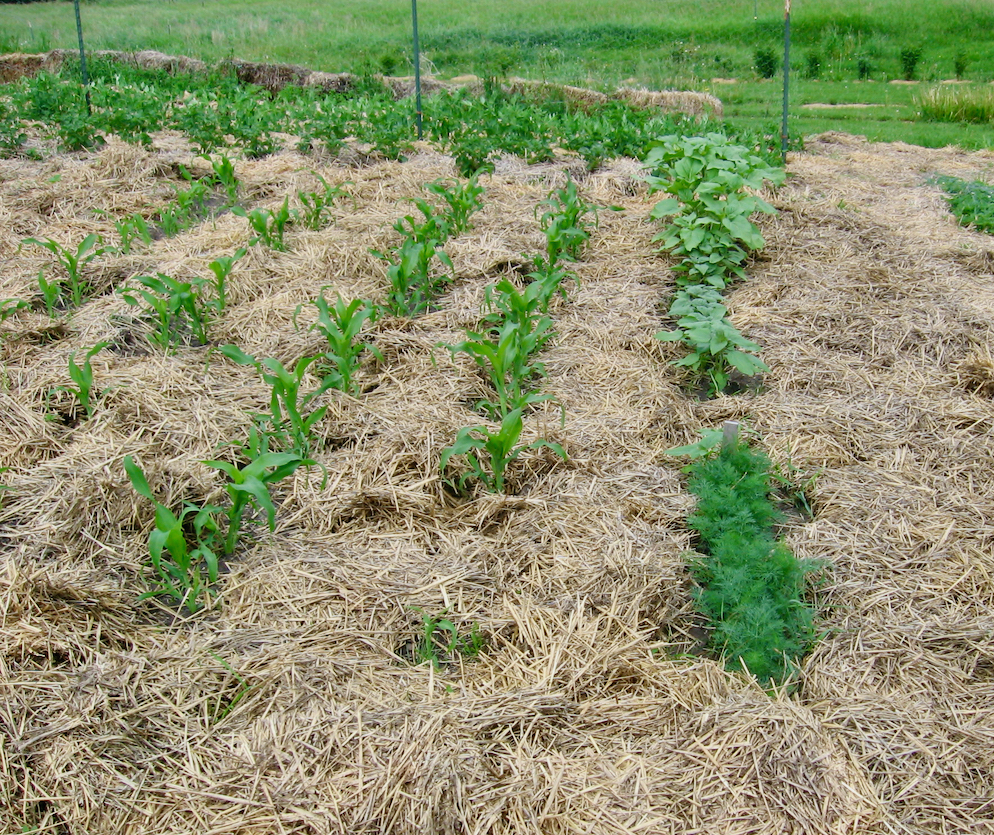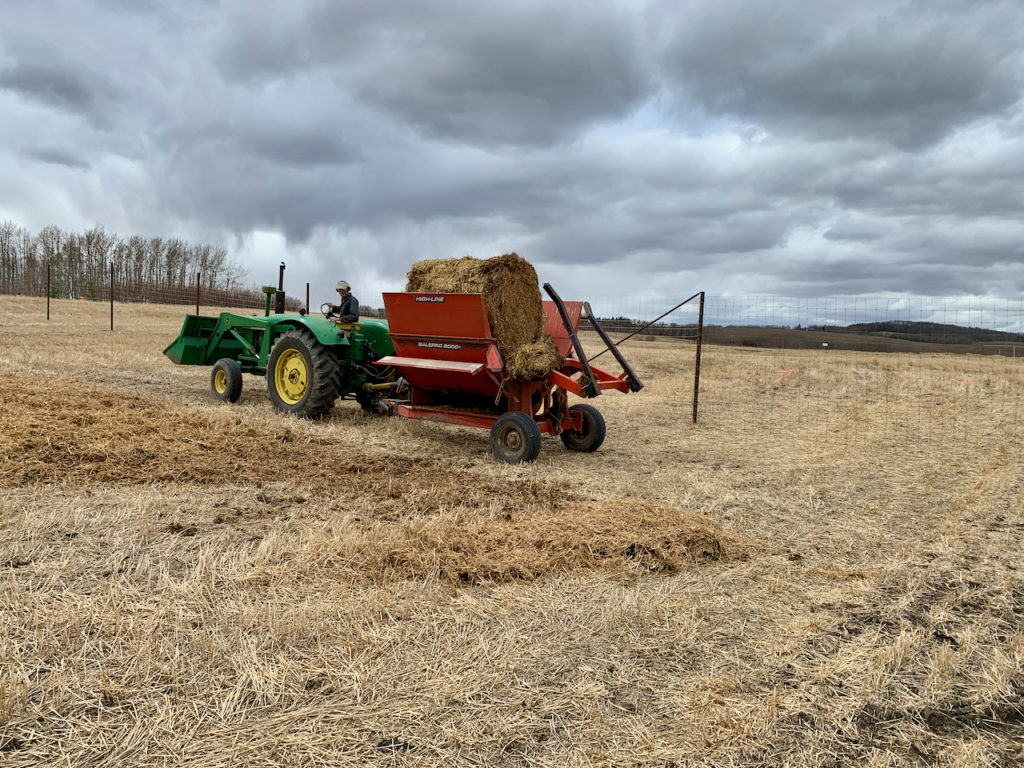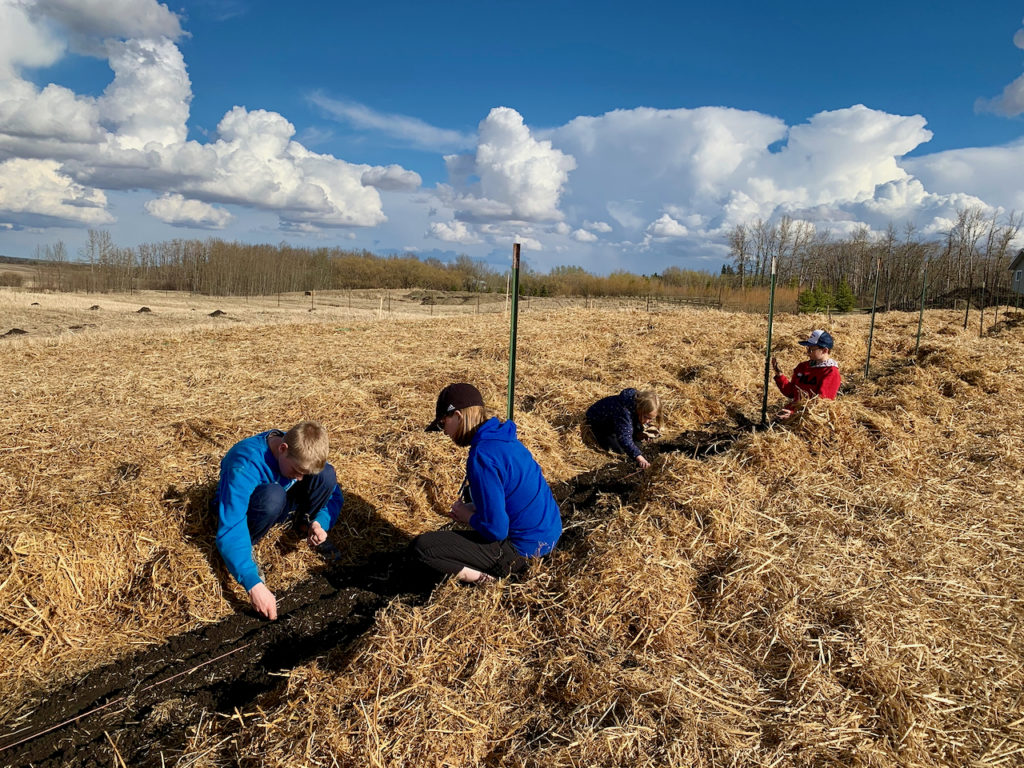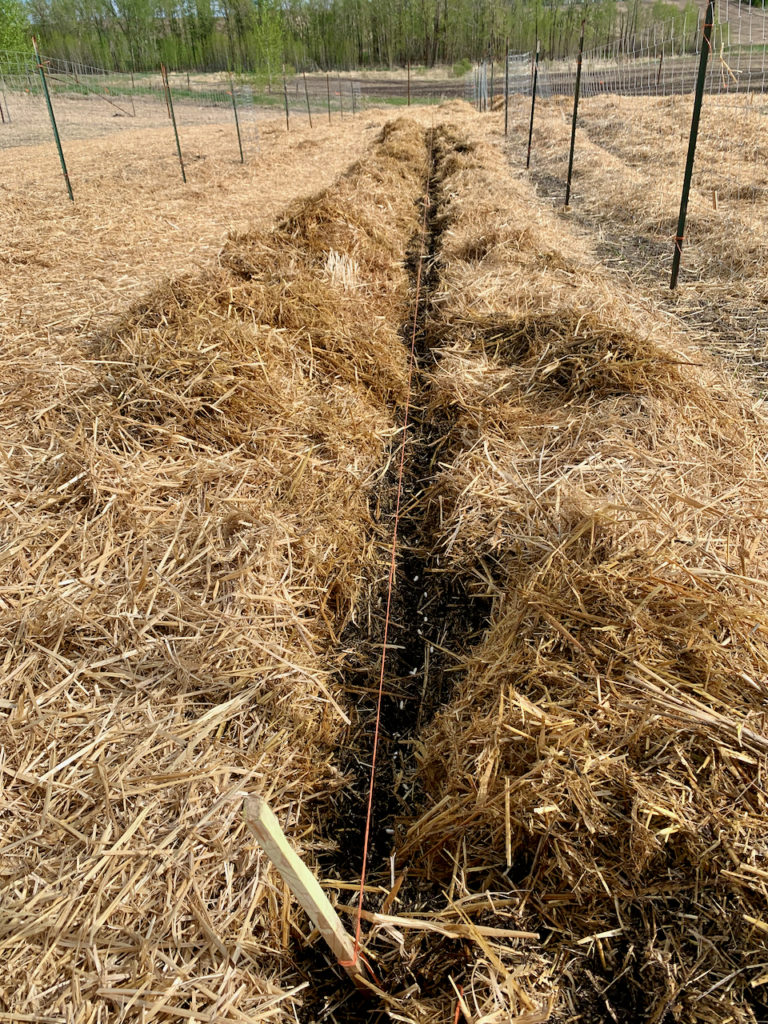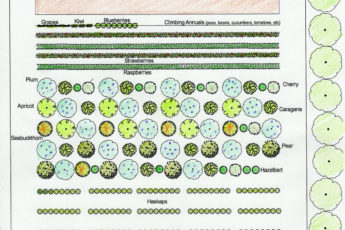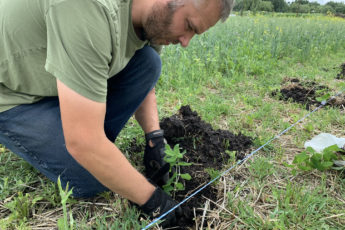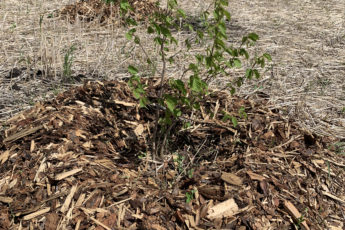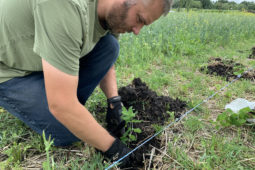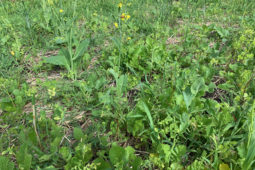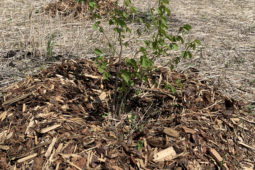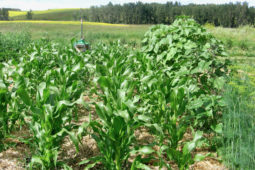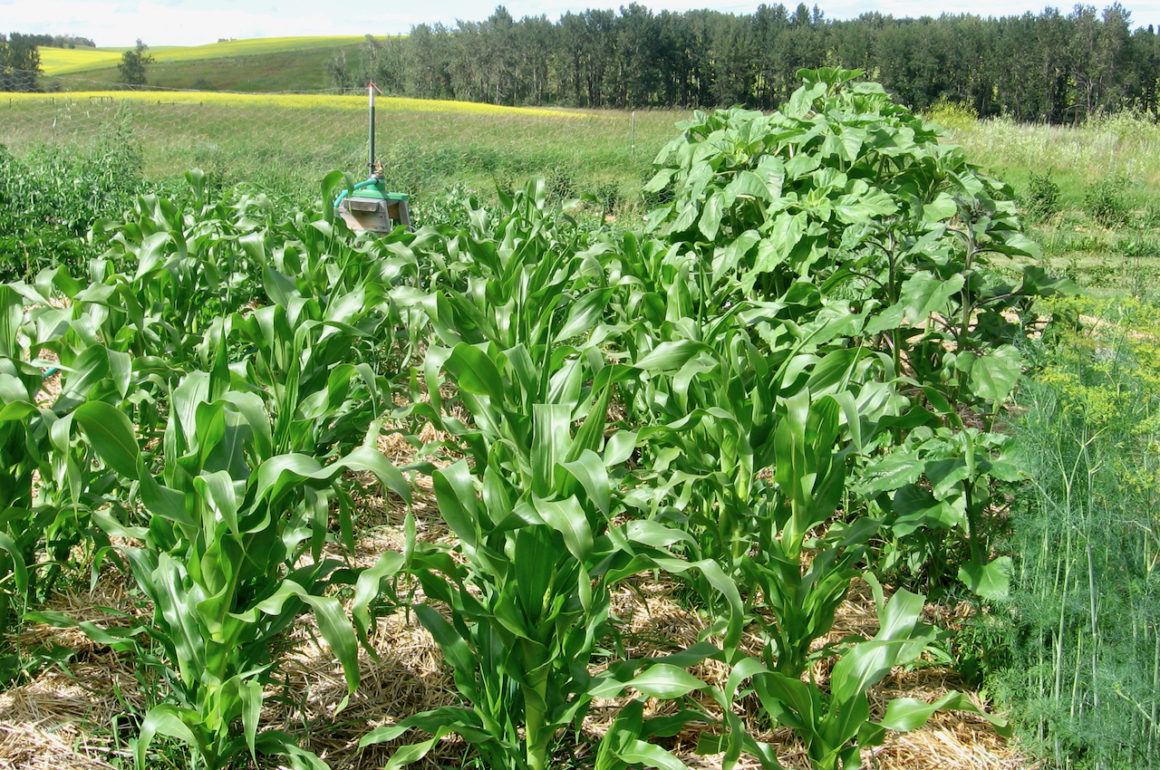
I’ve long been convinced that growing in mulch is the best way to garden. After all, it just makes sense. Mulch suppresses weeds, holds in moisture, and provides abundant food for all the worms and other little creatures in the dirt that provide nutrients for your plants! But honestly, even with all that knowledge, I’ve been slow to change over from the ‘traditional’ method of gardening. You know… roto-tilling the entire garden before planting – then tilling in between the rows a few times throughout the year…. keeping the garden soil bare and black so that it looks like a neat and tidy garden. (And I do tend to be a neat & tidy, straight-rows, kinda guy…) But this year as we start a new garden space on the farm, I’ve made the decision to cover the entire garden with a thick layer of straw mulch.
Now, I have played around a little bit with growing in straw previously. If you followed my old blog, you’ll remember that one year (back in 2008) I grew potatoes on top of the dirt, buried in straw. (See Growing Potatoes in Straw) And that worked really well! In fact, I experimented on a small scale with potatoes, corn, peas, sunflowers, and carrots all mulched with straw.
So this isn’t the first time I’ve experimented with this. But this will be the first time I fully take the plunge and plant the whole garden under straw.
The first step was to acquire some straw. As it happened, the farmer down the road had a stack of old round straw bales that had been sitting in his field for the last couple of years, so we offered to take them off his hands. He invited us to take whatever we wanted for free – which was an incredible blessing! We happily took them all.
My garden space is on the west end of my orchard – which is fully enclosed by an 8ft fence so my garden doesn’t become a salad bar for the deer. The site has been a traditionally farmed field for the last decade or so – previously planted to barley, wheat, or canola – so I’m thankful I don’t have to deal with sod or an enormous amount of weeds. However, it is a very large site (at least compared to anything I’ve gardened before). It’s about 80′ x 190′. To cover that area with 6-8 inches of straw would be a mammoth undertaking!
Thankfully, another neighbour had a bale shredder (used to feed or provide bedding for cattle) that he offered to loan us. This would make the job of spreading the straw WAY quicker and easier! (As it was, it still took the bulk of an afternoon spreading out nine round bales of straw over the roughly 15,000 sq ft of garden space.) Praise the Lord for neighbors! Farming has a long history of community cooperation and it’s no wonder! We couldn’t do this without the help of friends, family, and neighbors!
Well, one very windy afternoon later, we had roughly 8 inches of straw all over the garden area. I left the straw to settle for about a week before we began planting.
Potatoes were first to plant and they were fairly simple. I employed a little help from yet another friend and we pulled back pockets of straw with a pitchfork, dug a hole for the seed potato, and then covered it up again with dirt and the straw. For most other veggies, I would leave the straw to the side until the plant had emerged, but I knew the potatoes would have no trouble pushing through the straw, so I completely re-covered the area with several inches of straw.
For peas, I started by putting in my pea fence posts. Then, with the help of my kids, I pulled back about a 1 ft strip of straw with either a rake or pitchfork. Then I hoed two furrows side-by-side so I could have a row on either side of the fence.
For other seeds, like beans for example, I pulled aside just a narrow strip of straw with a triangle-shaped hoe. Then, using that same hoe, dug a small furrow.
*As a little note, I found that although the tractor pulling the bale shredder sure spread the straw quickly, it also resulted in the ground becoming very compacted! In the places where the tractor tires went, it was very difficult to dig the furrow. Other places were much easier! I think once the straw begins to decomposed and the worms do their thing – the soil should become much easier to work with!
Finally, after seeding in the furrow, I covered the seeds with soil, but not with straw. I’ll wait until there are some well-visible sprouts before I move the straw back around them – since I don’t want to smother them.
And that’s about it! At the time of this post (May 31), I have all of my seeds planted, but still a few seedlings to transplant into the garden. I’ll likely do that in the next week or so.


